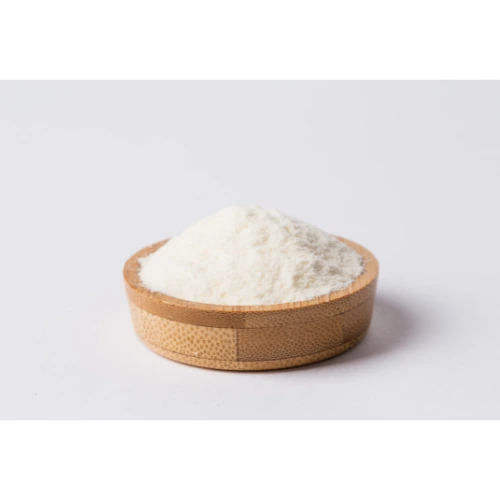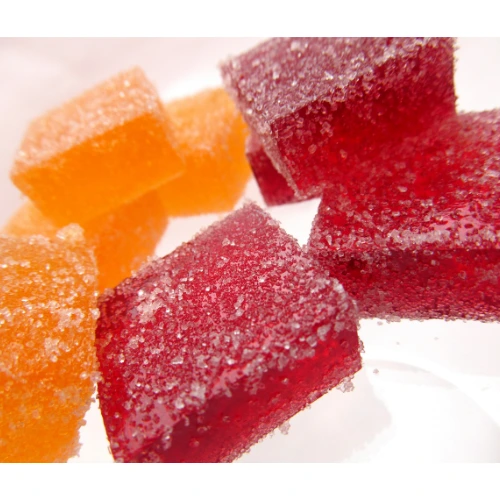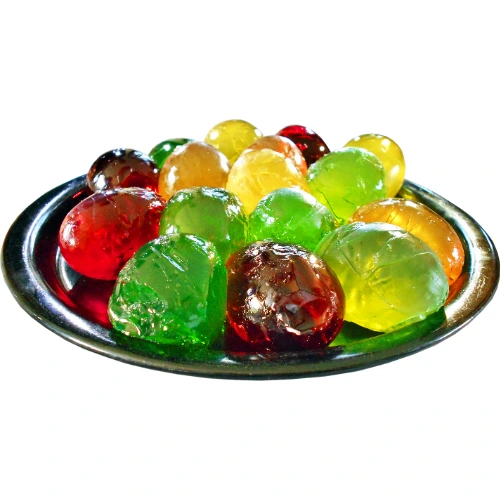How to Make Jelly Drops for a Loved One With Dementia
Do you have a loved one with dementia who struggles to eat or drink enough? It can be a heartbreaking and frustrating situation. But there’s a simple solution that can make a big difference: jelly drops. These small, flavorful bites are easy to swallow and can provide a much-needed boost of hydration and nutrition. In this blog, I’ll show you how to make jelly drops for your loved one with dementia and share some tips and tricks I’ve learned along the way.
Ingredients Needed
To make jelly drops, you will need:
- Sugar-free jelly crystals (any flavor of your choice)
- Agar-agar powder or gelatin powder
- Water
- Mini ice cube trays or molds
Steps to Make Jelly Drops
Step 1:

In a small pot, bring 1 cup of water to a boil.
Step 2:

Once the water is boiling, add 1 teaspoon of agar-agar powder or 1 tablespoon of gelatin powder to the pot. Stir well until the powder is fully dissolved.
Step 3:

Add sugar-free jelly crystals to the pot, according to the package instructions. Stir well until the jelly crystals are fully dissolved.
Step 4:
Remove the pot from the heat and let it cool for a few minutes.
Step 5:
Pour the mixture into mini ice cube trays or molds. Make sure to leave a little space at the top of each mold.
Step 6:
Let the molds cool at room temperature for a few minutes, then transfer them to the refrigerator. Let them chill for at least an hour or until the jelly is fully set.
Step 7:
Once the jelly is set, remove the molds from the refrigerator and gently pop the jelly drops out of the molds.
Step 8:
Store the jelly drops in an airtight container in the refrigerator until ready to serve.
That’s it! Making jelly drops is a simple and easy way to provide a tasty and hydrating treat for a loved one with dementia.
Serving Suggestions

Jelly drops are a great option for those with dementia who struggle with solid foods or have difficulty swallowing. But what’s the best way to serve them?
Here are some serving suggestions that may make jelly drops more enjoyable for your loved one:
1. Presentation is key
The way food looks can have a big impact on appetite. Consider using a bright and colorful plate or bowl to serve the jelly drops. You can also use different colors of jelly for variety.
2. Serve in small portions
Too much food at once can be overwhelming, especially for someone with dementia. Consider serving a small portion of jelly drops, and then offering more if they’re still hungry.
3. Make it a snack
Jelly drops can be a great snack between meals or as a dessert after a meal. Consider serving with a small glass of water or a cup of tea to help wash down the jelly drops.
4. Experiment with textures
Some people with dementia may prefer different textures in their food. Consider adding fruit chunks, coconut flakes, or chia seeds to the jelly drops to add some texture and variety.
5. Get creative with shapes
Using different-shaped molds or cutting the jelly drops into fun shapes can make eating more fun. You can even use cookie cutters to create unique shapes.
6. Serve with a smile
The way you serve the jelly drops can have a big impact on your loved one’s mood and overall experience. Try to serve with a smile and a positive attitude to make the experience more enjoyable for everyone.
Remember, serving jelly drops isn’t just about providing nutrition, it’s also about creating a positive and enjoyable experience for your loved one. By using these serving suggestions, you can help make mealtime a more enjoyable and stress-free experience for both you and your loved one with dementia.
Tips for Making Jelly Drops
Making jelly drops can be a great way to provide hydration and nutrition to a loved one with dementia who may struggle with eating and drinking. Here are some tips to keep in mind when making jelly drops:
1. Choose the right kind of jelly
Not all jelly is created equal when it comes to making jelly drops. You’ll want to choose a jelly that is easy to dissolve in hot water and that sets quickly in the refrigerator. Some popular brands for making jelly drops include Jell-O and Hartley’s.
2. Use a syringe or pipette
To create small, bite-sized drops, you’ll need to use a syringe or pipette to distribute the jelly mixture into a mold. This can be a bit time-consuming, but it’s the best way to ensure that each drop is the right size.
3. Consider adding nutrition supplements
If your loved one has specific nutritional needs, you can add supplements like protein powder, vitamins, or electrolyte powder to the jelly mixture before pouring it into the mold.
4. Experiment with flavors
While plain water-based jelly can be a good option, you can also experiment with different flavors to make the jelly drops more appealing to your loved one. Some popular flavors include fruit juice, lemonade, or herbal tea.
5. Keep the drops refrigerated
Jelly drops can melt quickly at room temperature, so it’s important to keep them refrigerated until they are ready to be eaten. You can store them in an airtight container in the refrigerator for up to a week.
6. Offer the jelly drops as a snack or dessert
Jelly drops can be a great option as a midday snack or a dessert after a meal. They are easy to eat and provide hydration and nutrition in a fun and flavorful way.
My personal experience:
My grandmother struggled with eating and drinking due to her dementia, and making jelly drops was a great way to ensure she was getting the hydration and nutrition she needed.
We experimented with different flavors like apple juice and raspberry tea and even added a protein supplement to help her stay strong.
The syringe was a bit tricky to use at first, but we quickly got the hang of it and were able to make plenty of small, bite-sized drops. Plus, she loved the way they tasted and always looked forward to snack time.
Benefits of Jelly Drops for People with Dementia
Jelly Drops are a wonderful way to provide hydration and nutrients to people with dementia who may struggle with drinking enough fluids. Here are some of the benefits of using jelly drops:
1. Hydration
People with dementia may have difficulty remembering to drink water or may not feel thirsty. Jelly Drops provide a fun and tasty way to stay hydrated.
2. Improved Nutrition
Jelly Drops can be made with fruit juice, which adds a source of vitamins and minerals to the diet of people with dementia who may have difficulty eating or may not have much appetite.
3. Cognitive Stimulation
Making jelly drops can be a fun and engaging activity for both the caregiver and the person with dementia. It can help to promote social interaction and cognitive stimulation.
4. Reduced Risk of Choking
People with dementia may experience difficulty swallowing, which can put them at risk of choking. Jelly Drops can be made in a soft, easy-to-swallow consistency that reduces the risk of choking.
As a caregiver, I have seen firsthand the benefits of using Jelly Drops for people with dementia. My loved one struggled with dehydration and didn’t like to drink plain water. But when I started making Jelly Drops with his favorite fruit juice, he was excited to try them and would happily snack on them throughout the day. It was a relief to know that he was getting the hydration and nutrition he needed to stay healthy.
Final thoughts
Making jelly drops for a loved one with dementia can be a simple yet effective way to provide hydration and nutrition. These small treats can help improve their quality of life and make mealtimes more enjoyable. By following the tips and tricks mentioned above, you can make jelly drops easily at home.
Have you tried making jelly drops before? Do you have any other tips to share? Let me know in the comments below.

Thank you for the recipe , they are expensive to buy now I can make them for my father that has dementia. God bless you 🙏 ❤️
🙂
Hi, thank you for this recipe, but what is the difference between jelly crystals and gelatin powder? Jelly crystals look like jello when I search online, but is gelatin powder not also jello?
Thank you
Hi Cecilia, I’m glad you enjoyed the recipe!
Jelly crystals and gelatin powder are similar but not exactly the same. Jelly crystals usually contain sugar, flavoring, and coloring, and they are used to make a jelly-like dessert. On the other hand, gelatin powder is a pure protein derived from collagen and has no added flavor or color. When using gelatin powder, you typically mix it with other ingredients to create various dishes, including desserts like jello. So, while they both contribute to jello-like textures, they have different compositions and uses in recipes. I hope this clarifies the difference for you! Enjoy your cooking! – Ryan
Thank you, Ryan, that is helpful!
Many thanks for this recipe, I’m going to try it soon. My mother loved Jelly Drops but we can no longer get them in our country.
When using juice do you substitute it for the water? Or when do you mix it in? Same with the electrolytes, when do you mix it in or do you use Propel powder instead of the jelly crystals?
Thank you!
For making jelly drops with juice, substitute it for the water during the mixing process. Add electrolytes when initially mixing the ingredients, or (as you mentioned) use Propel powder instead of jelly crystals at the same stage.